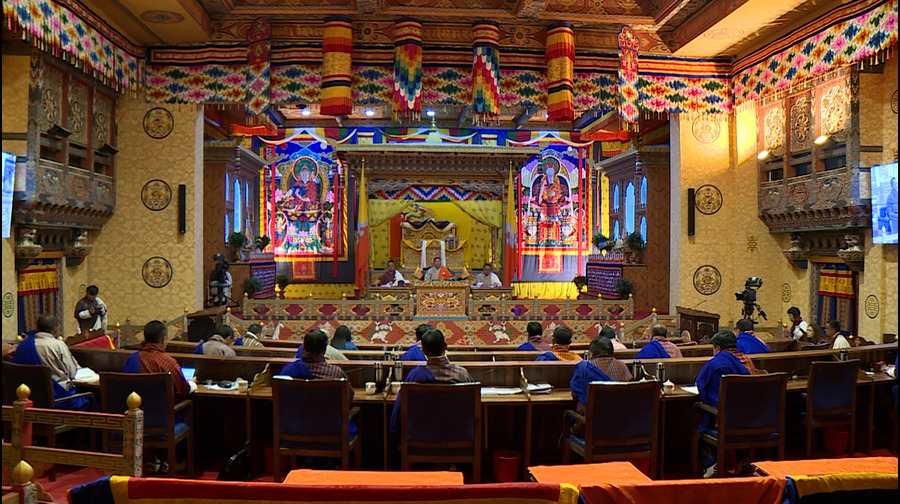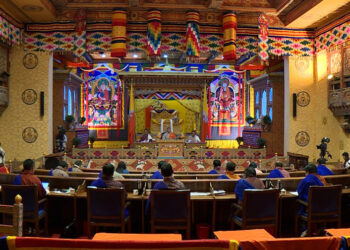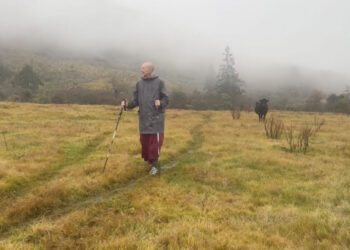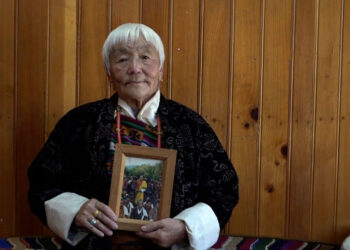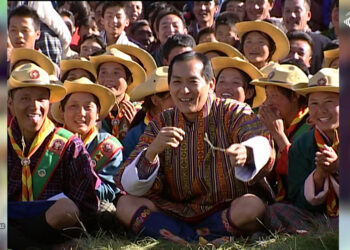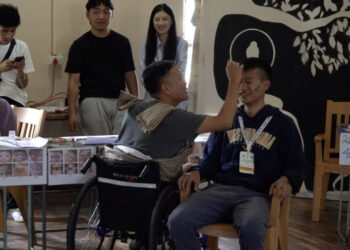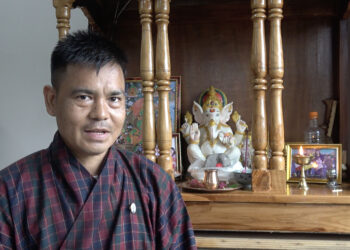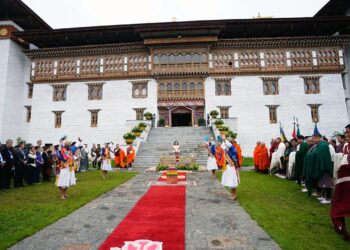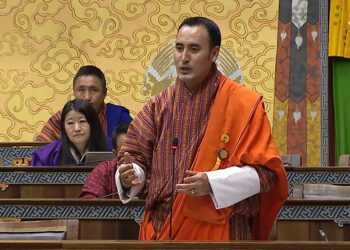Featured News
British nun Ani Pema Deki completes 400km trek from Haa to Trashigang, raising over Nu 9 M for children with disabilities
Ani Pema Deki, also known as Emma Slade, has completed her 400-kilometre walk across the Trans-Bhutan Trail to raise funds...
Moments with the Great Fourth: memories that still touch Bhutanese hearts
For many Bhutanese, a moment shared with His Majesty the Fourth Druk Gyalpo remains one of the most treasured moments...
His Majesty the Fourth Druk Gyalpo’s timeless vision of happiness still shapes Bhutan’s future
In a world chasing growth through numbers, Bhutan chose to measure something far deeper: happiness. As the nation celebrates the...
JSW Law Graduate makes mark in the U.S., clears New York Bar Examination
A young Bhutanese woman lawyer has made a mark in the international legal arena by passing the prestigious New York...
Thimphu’s YDF hall buzzes with Deaf Week celebration
The YDF Hall in Thimphu came alive today with laughter, music, and the vibrant spirit of inclusion as the Disabled...
Journey of Karma Raygel, rescued elephant calf thrives under care in Jomotshangkha
Seven months ago, the officials of Jomotshangkha Wildlife Sanctuary in Samdrup Jongkhar rescued a young elephant calf from the wild....
State funeral held for late Dasho Zimpon Dorji Gyeltshen, late Dasho chooses incineration over open-air cremation
The state funeral for late Dasho Zimpon Dorji Gyeltshen was held today. His Holiness the Je Khenpo presided over the...
Veteran archers compete one last time in spirit of tradition and tribute
As a heartfelt farewell to the sport they once dominated, some of Bhutan’s finest former archers returned to the archery...
Gyalsup homecomings spark joy and unity across Bhutan, with heartfelt reunions going viral on social media
In a wave of emotion sweeping across Bhutan, thousands of families are experiencing a homecoming unlike any other. Their sons...
From the King’s hand to the family’s altar
As the Gelephu Mindfulness City rises from vision to reality, it is not only bulldozers and blueprints that are shaping...
Politics
FASTag access for Bhutanese vehicles nears resolution as India submits SOP draft
The foreign affairs and external trade ministry has received a draft Standard Operating Procedure from the Indian government concerning the...
Popular
-
National Council recommends delinking health workforce to address rising attrition
-
Police can now freeze scam accounts without court orders, says Home Minister
-
30-year annual compensation set for land affected by power lines starting next year
-
‘News in Tales’ workshop equips Bhutanese journalists with narrative storytelling skills
-
National Assembly MPs raise concerns over unequal access to school facilities and resources
Casino en ligne avec mise en argent réel
Choisissez un casino en ligne avec argent réel pour jouer à vos jeux préférés et retirer vos gains en toute simplicité. Avec des options de paiement rapide et un environnement réglementé, vous bénéficiez d’un divertissement sûr et fiable.
Decades-long water shortage in Barp Gewog set to end next year, Punakha
The shortage of drinking water shortage problem will soon become a thing of the past for the people of Barp...
Businesses seek transitional relief ahead of GST rollout
With the Goods and Services Tax (GST) and Excise Tax set to come into force in January next year, business...
Bumthang: spiritual heart and Royal birthplace welcomes National Day celebration
Bumthang is believed to be the first place visited by Guru Rinpoche and is revered as the birthplace of the...
National Assembly questions effectiveness of MoAL’s cost-sharing mechanism
Some Assembly members raised concerns over the effectiveness of the cost-sharing mechanism. They said it has not adequately benefited economically...
Zakar
Recent News
- Decades-long water shortage in Barp Gewog set to end next year, Punakha
- Businesses seek transitional relief ahead of GST rollout
- Bumthang: spiritual heart and Royal birthplace welcomes National Day celebration
- National Assembly questions effectiveness of MoAL’s cost-sharing mechanism
- Bridge construction begins at Chimti, bringing relief to Chhukha’s Logchina residents
News Category
- Accidents
- Agriculture
- Announcement
- Audience Survey Report
- Business
- Crime/Legal
- Culture
- Development
- Disaster
- Economy
- Education
- Entertainment
- Environment
- Feature
- Featured
- Festival
- Global Peace Prayer Festival
- GMC
- Gyalsung
- Headlines
- Health
- HYDROPOWER
- K4 70th Birthday special feature
- Legal
- Literature
- Livestock
- Media
- Other Stories
- Politics
- RCSC
- Recent stories
- Religion
- Sci/Tech
- Social
- Sports
- Technology
- Tourism
- Uncategorized
- Video
- Video Story
- Wildlife
© 2024 BBSCL. All rights reserved.






